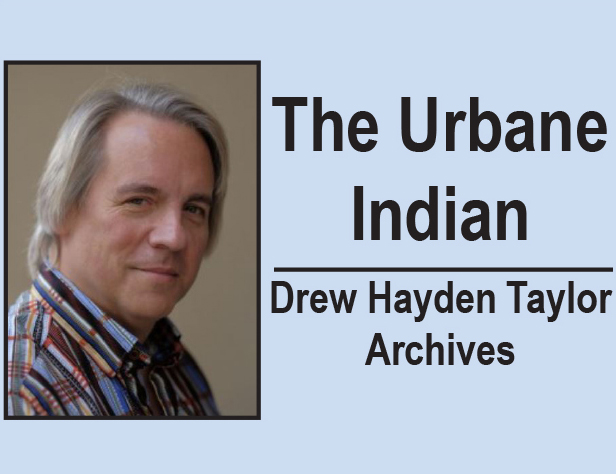
By Drew Hayden Taylor
Originally published in March 2014
Ahneen, sago, tansi… Namaste!
By the time you read this I will be very far away, deep in India – an Indian amongst Indians you could say– once again spreading the gospel of Native culture. Perhaps I shall be explaining why wild rice is better than basmati rice. Why bannock is better than naan. Why I prefer a Big Mac instead of a McAlootika burger. (NOTE: Evidently it’s difficult to slaughter and cook beef in a country where the cow is sacred, so you get a spiced potato patty at the golden arches instead).
The reason: I have been invited to a conference in Trivandrum called “Humour – text and context”. Basically, I am going to have to explain the Aboriginal sense of humour. In less than an hour. To a bunch of foreign academics. Now that’s funny!
At the best of times, exploring and explaining humour is difficult because even when you’re successful in deconstructing the topic, the final result seldom ends up being funny. It’s like that old saying, ‘the operation was a success but the patient died.’ There are some jokes they might get….
Why do Native people hate snow? Because it’s white, and all over our land.
… even though in tropical Trivandrum, there has never been any record of snow, but there has been, however, a historical influx of British and Portuguese colonizers during the last couple hundred years. So hopefully, the context will survive the explanation.
Still I am a firm believer that true humour is universal. What makes the ladies sitting on the reserve, sharing cups of tea at the kitchen table, laugh will no doubt make the ladies sitting in Jaipur having a cup of tea laugh also. Everybody and every culture has a funny bone. And when it comes to things like humour, metaphorically, there is no uniquely Native way to boil an egg.
There are cultural differences and influences that do provide a different perspective to some of the humour, but essentially, making fun of the government or a family member happens everywhere.
Tricksters are also quite universal. Many cultures in India, Africa, Europe, China etc. have their own variation of our beloved Trickster, a character who teaches and entertains through mischief. Or at least the spirit of the Trickster.
My girlfriend tells the tale of going to the zoo in Delhi, on a previous trip to India. She is walking through the compound and sees this one enclosure. It’s shaped like a rock cave, with chicken wire all around it, looking quite formidable and holding something dangerous. Curious to see what’s in it, she approaches where a crowd of Delhian Indians were gazing in wonder at the occupant of the cage. A sign on the cage read “North American Raccoon”, and this very confused raccoon was walking across the enclosure.
My first time in India happened to coincide with my mother’s birthday. Being a good son, I managed to find an internet café and send her a birthday greeting via my aunt who worked at the band office. I said something like “I am here in exotic India, having a fabulous time. There are elephants and camels in the streets, and monkeys in the trees. It’s quite fabulous. Sorry I am missing your birthday and I hope you have a good time.”
Several days later, I got an email back from my aunt, who while also marvelling at my proximity to monkeys, elephants and camels, told me mother had a very nice birthday. “We took her to dinner, then we went to the garbage dump and watched the bears.”
As I said, many things are not that different between cultures, if properly translated through the funny bone. Of course this is the weirdest time for me to be travelling internationally. I have a friend at the CBC who was talking to their reporters covering the typhoon in the Philippines. It seems these poor, damaged and desolate Filipinos, when being interviewed, commented when they found out the reporters were from Toronto, “That’s the place with that funny Mayor, right?”
I hope nobody asks me embarrassing questions about National Chief Shawn Atleo.
